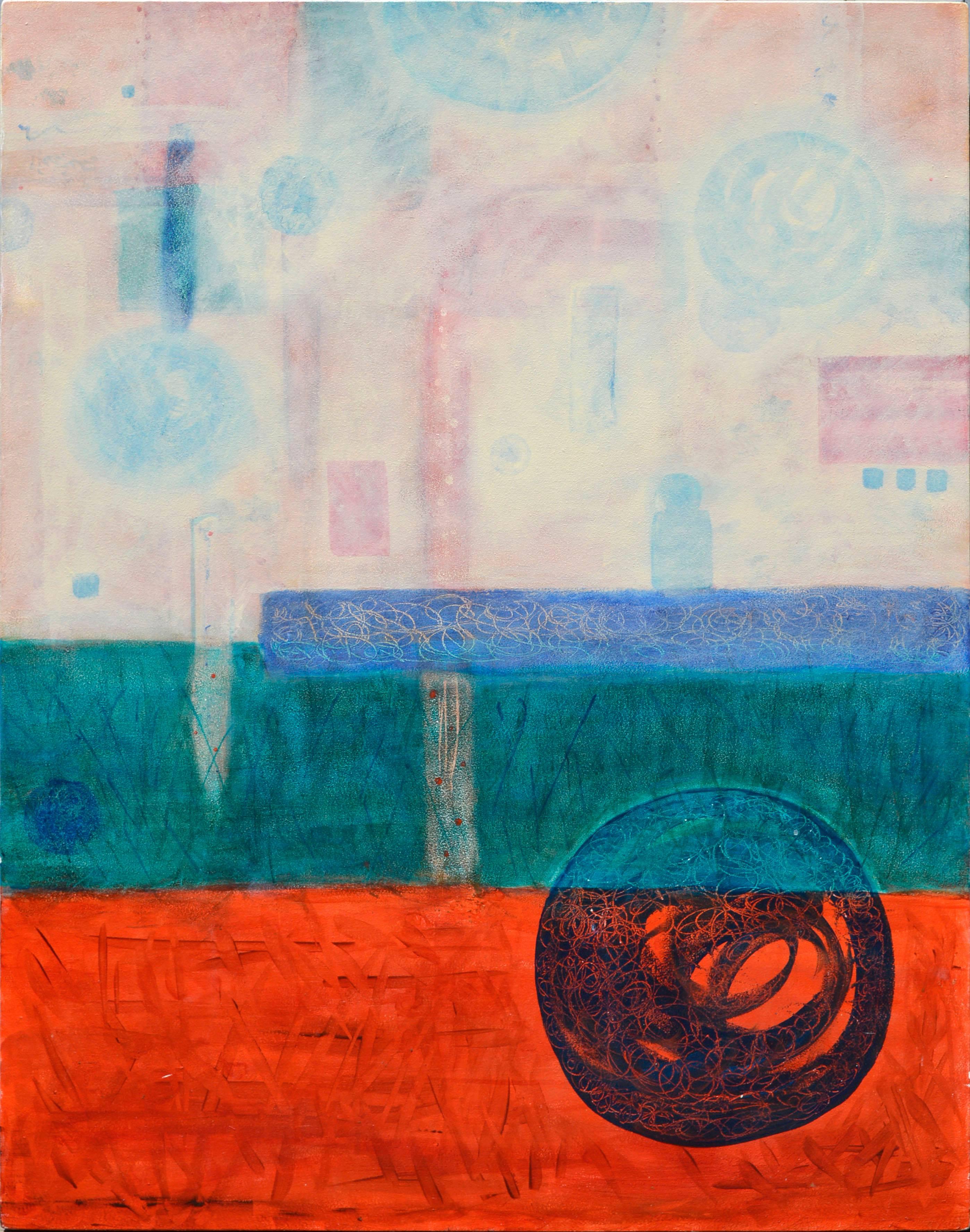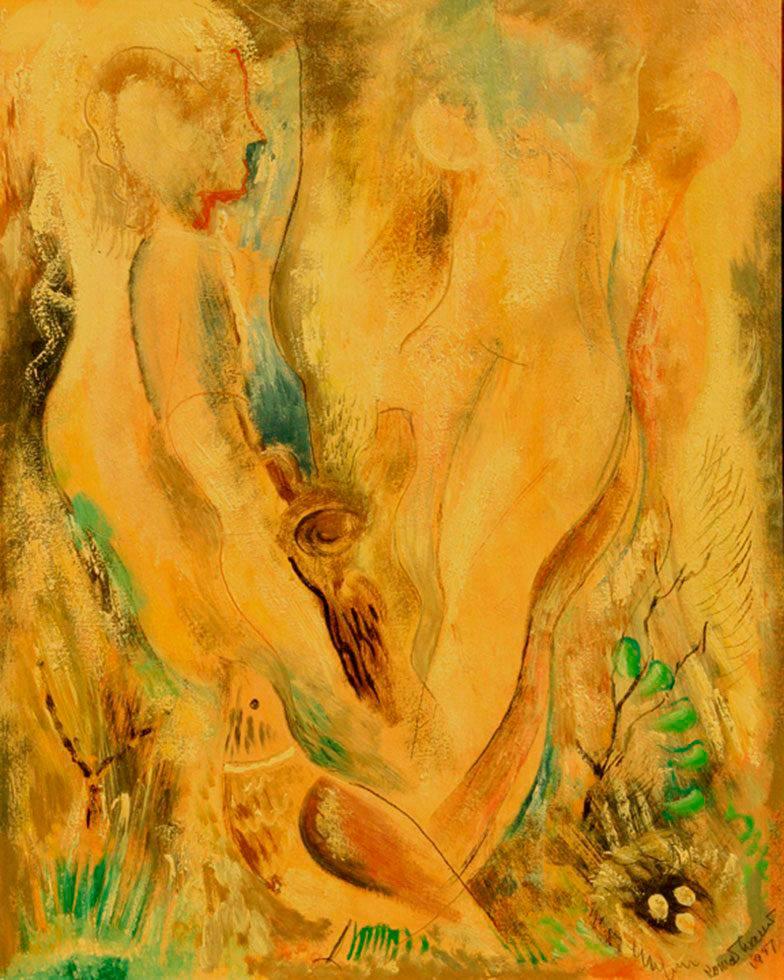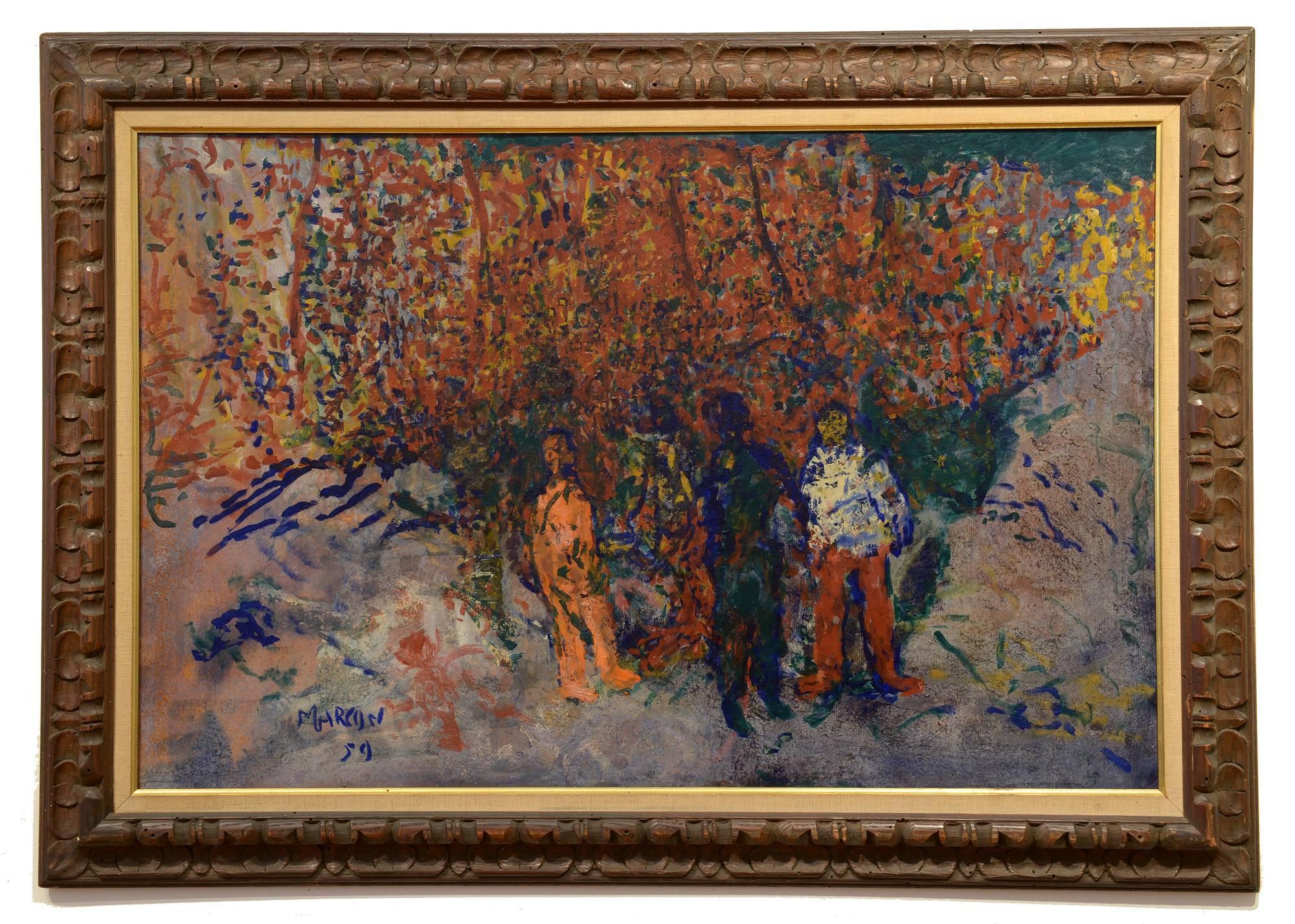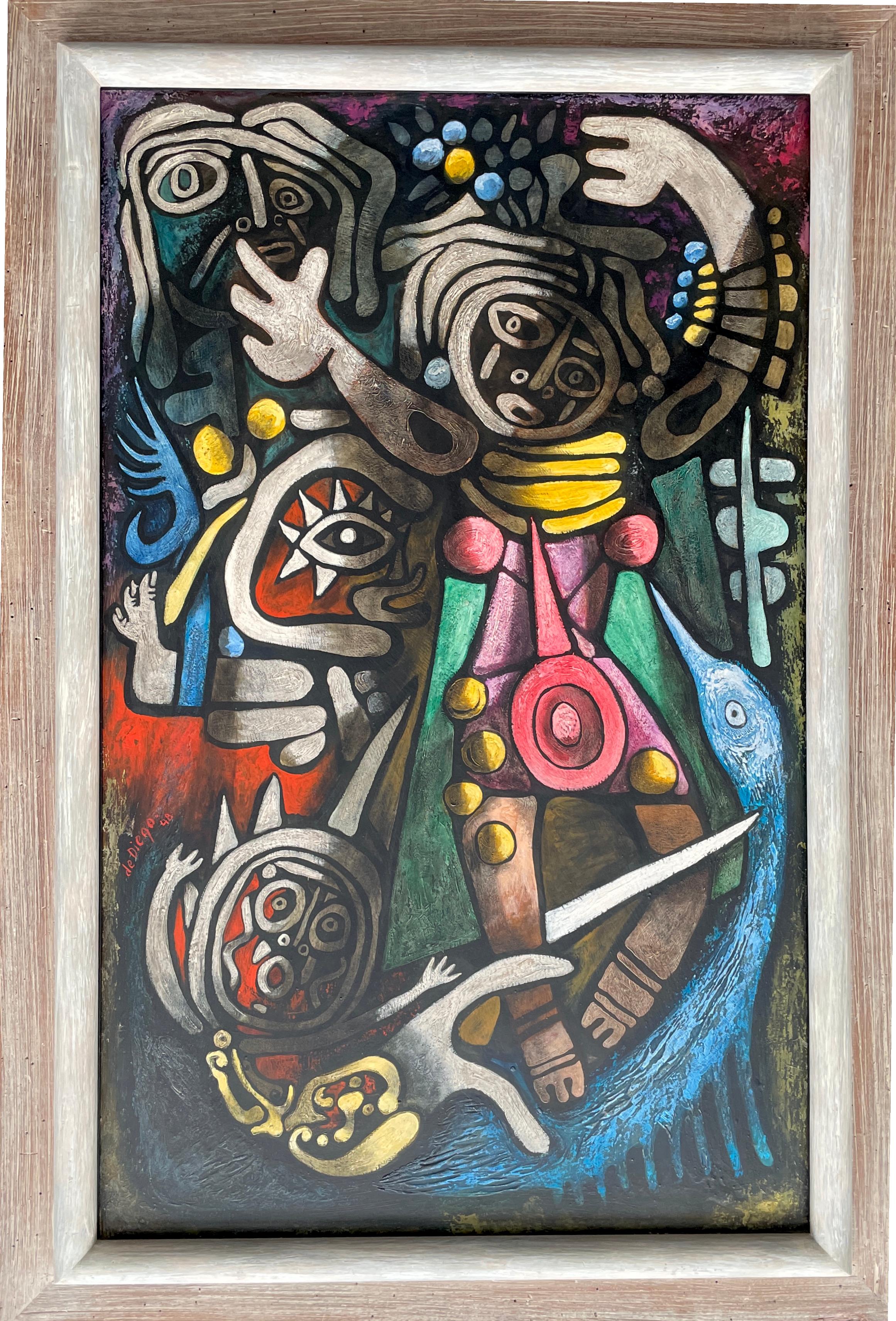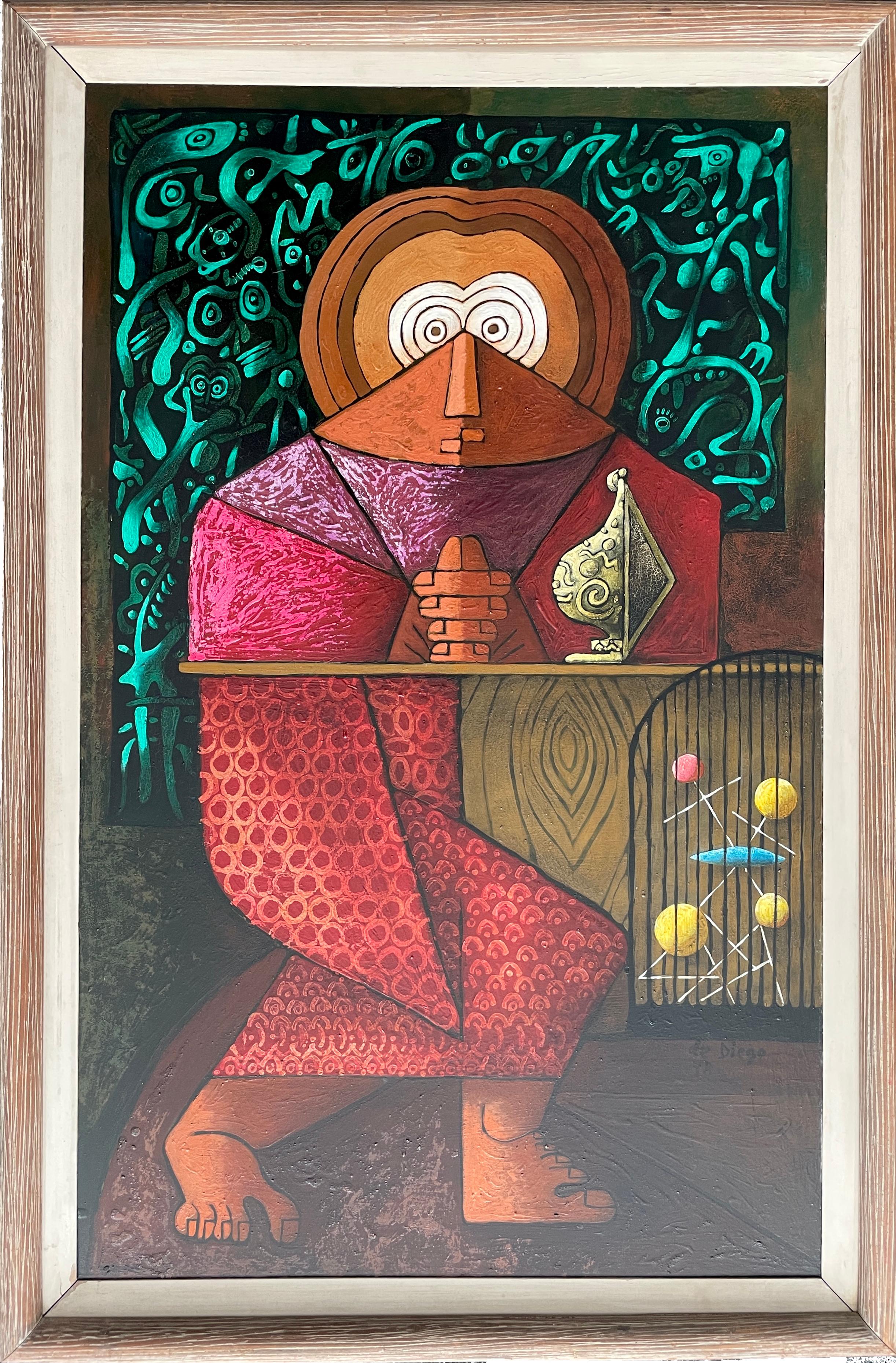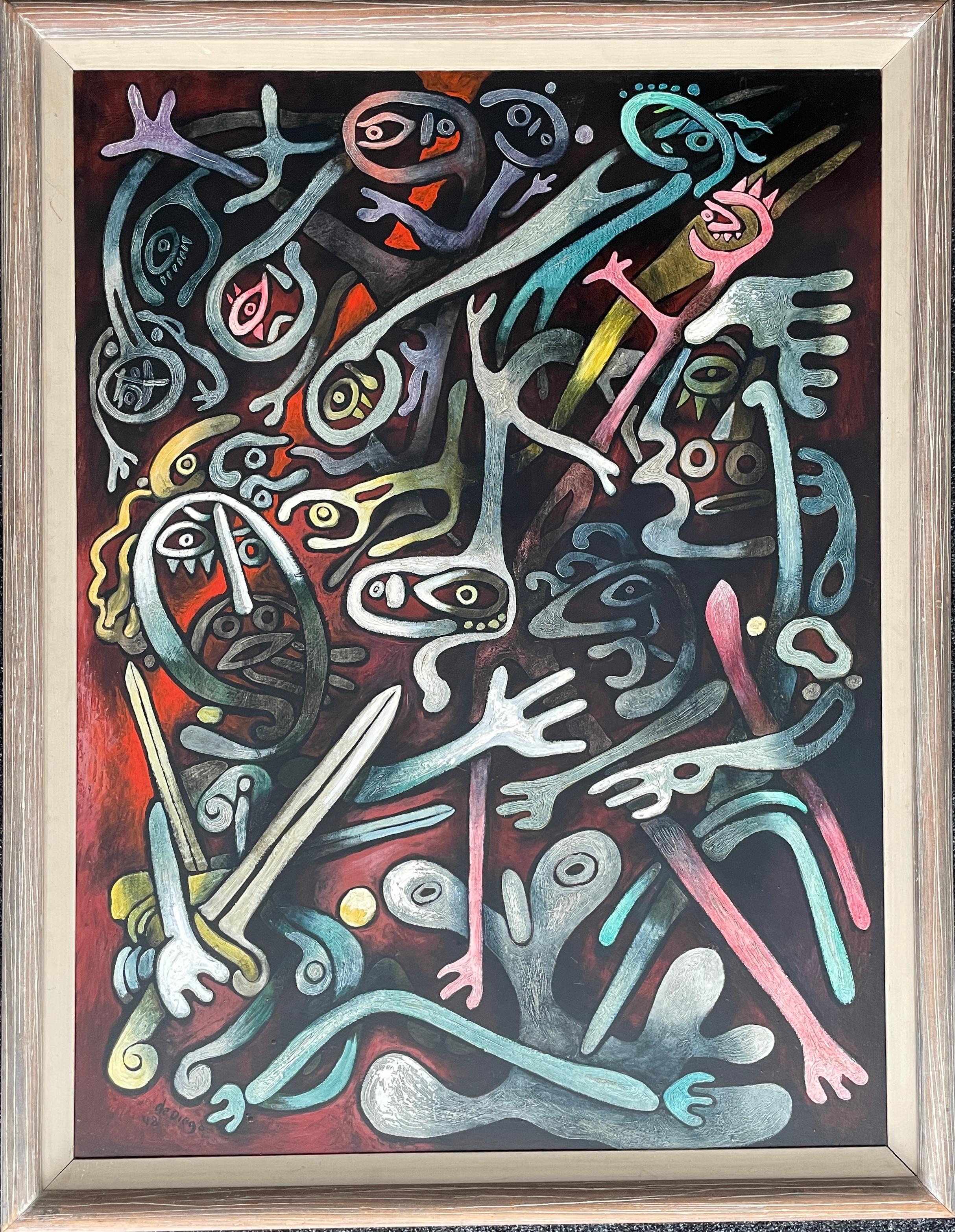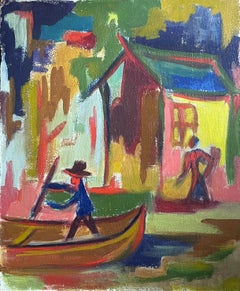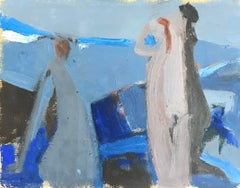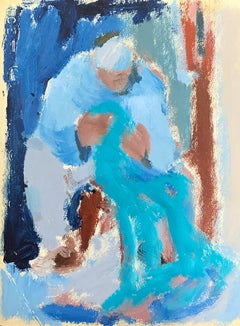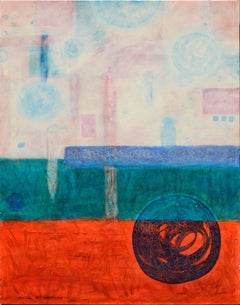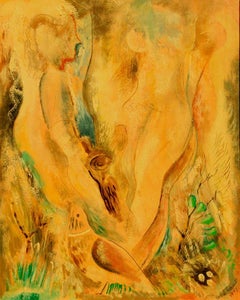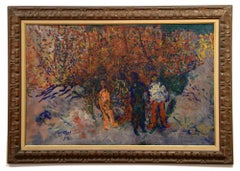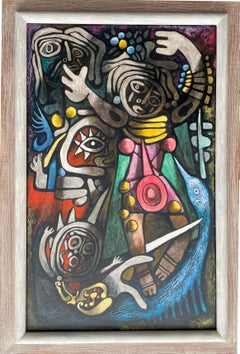Items Similar to 1960's French Modernist Oil Painting Green background with Bizarre Figures
Want more images or videos?
Request additional images or videos from the seller
1 of 10
20th Century French School1960's French Modernist Oil Painting Green background with Bizarre Figures1960's
1960's
About the Item
Artist/ School: French School, 1960's period
Title: figurative group, with deep green color background.
Medium: oil on canvas, unframed
Canvas: 36.5 x 26 inches
Provenance: private collection, France
Condition: The painting is in overall very good and sound condition.
- Creator:20th Century French School
- Creation Year:1960's
- Dimensions:Height: 36.5 in (92.71 cm)Width: 26 in (66.04 cm)
- Medium:
- Movement & Style:
- Period:
- Condition:
- Gallery Location:Cirencester, GB
- Reference Number:1stDibs: LU509310753842
undefined
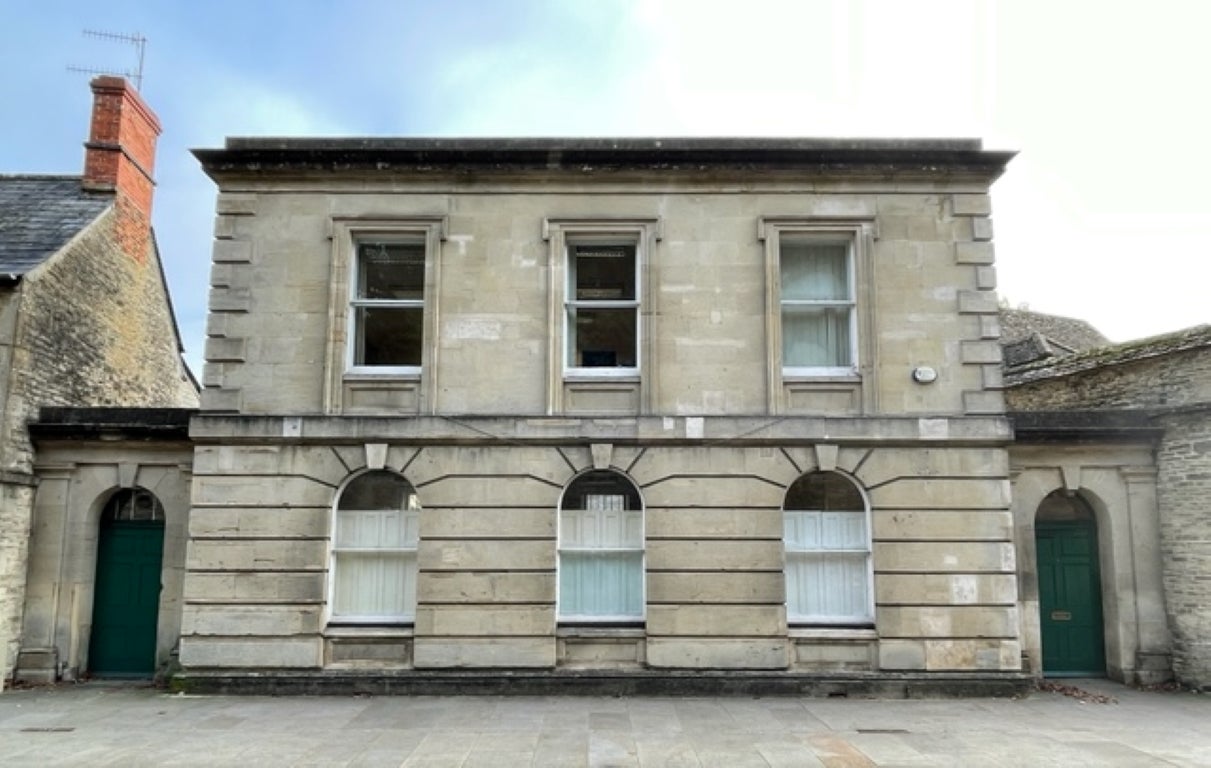
About the Seller
5.0
Platinum Seller
Premium sellers with a 4.7+ rating and 24-hour response times
Established in 1989
1stDibs seller since 2016
4,501 sales on 1stDibs
Typical response time: 1 hour
- ShippingRetrieving quote...Shipping from: Cirencester, United Kingdom
- Return Policy
Authenticity Guarantee
In the unlikely event there’s an issue with an item’s authenticity, contact us within 1 year for a full refund. DetailsMoney-Back Guarantee
If your item is not as described, is damaged in transit, or does not arrive, contact us within 7 days for a full refund. Details24-Hour Cancellation
You have a 24-hour grace period in which to reconsider your purchase, with no questions asked.Vetted Professional Sellers
Our world-class sellers must adhere to strict standards for service and quality, maintaining the integrity of our listings.Price-Match Guarantee
If you find that a seller listed the same item for a lower price elsewhere, we’ll match it.Trusted Global Delivery
Our best-in-class carrier network provides specialized shipping options worldwide, including custom delivery.More From This Seller
View AllNorth African Street Market with Figures French Modernist Signed Painting
Located in Cirencester, Gloucestershire
The Market
French School, indistinctly signed
late 20th century
oil on canvas, unframed
canvas: 19.75 x 19.75 inches
Provenance: private collection, Paris
Condition: very good cond...
Category
Late 20th Century Modern Abstract Paintings
Materials
Oil
Original 20th Century French Modernist Oil Painting Man in Punt Boat by Houses
Located in Cirencester, Gloucestershire
Man in Boat
by Raymond Guidot (French, 1935 - 2021)
artists studio stamp verso
oil painting on board, unframed
board: 10.75 x 9 inches
stamped verso
condition: very good
provenance:...
Category
Mid-20th Century Modern Figurative Paintings
Materials
Oil
20th Century German Modernist Oil Painting Abstract Figures
Located in Cirencester, Gloucestershire
Artist: Elisabeth Hahn (German 1924-2021),
Elisabeth Hahn was born in Dortmund, Germany, where she began her artistic studies. In 1953, she moved to Paris. She continued her studie...
Category
20th Century Modern Figurative Paintings
Materials
Oil
20th Century German Modernist Oil Painting Abstract Figure Of Man Sewing
Located in Cirencester, Gloucestershire
Artist: Elisabeth Hahn (German 1924-2021),
Elisabeth Hahn was born in Dortmund, Germany, where she began her artistic studies. In 1953, she moved to Paris. She continued her studie...
Category
20th Century Modern Figurative Paintings
Materials
Oil
Large French Figurative Modernist Signed Oil Painting, Many Figures
Located in Cirencester, Gloucestershire
Artist/ School: French School, 20th century, signed
Title: Figurative composition.
Medium: signed oil painting on canvas, framed and inscribed verso.
framed: 25 x 21.25 inch...
Category
20th Century Modern Figurative Paintings
Materials
Canvas, Oil
Large 1960's French Modernist Oil Painting Bizarre Figurative Work
Located in Cirencester, Gloucestershire
Artist/ School: French School, c. 1960's
Title: Figurative Study
Medium: oil on canvas, unframed
Canvas: 36 x 25.5 inches
Provenance: private collection, France
Condition: The ...
Category
Mid-20th Century Modern Abstract Paintings
Materials
Oil
You May Also Like
Spiritual Origins - Geometric Abstract
By Julie Fudge
Located in Soquel, CA
Abstract oil on wood panel depicting the beginnings of the ascendancy of the Earth by Julie R. Fudge (American, 20th Century). Signed "Julie Fudge" on verso. Unframed. Image, 42"H x ...
Category
1980s American Modern Abstract Paintings
Materials
Oil, Wood Panel
Spring
By Konrad Cramer
Located in New York, NY
Oil on masonite
Signed and dated, l.r.
This painting is offered by ClampArt, located in New York City.
About the artist:
Konrad Cramer grew up in Wurtzburg, Germany, and attended the Karlsruhe Academy. He was a member of Der Blaue Reiter...
Category
1940s Modern Abstract Paintings
Materials
Masonite, Oil
"Gathering by the Trees, " Charles Marcon, figurative, abstract, 1959, modern
By Charles Marcon
Located in Wiscasset, ME
Born in Terrenoire in the Loire, France, self-taught painter Charles Marcon was encouraged by Madeleine Castaing and Paulette Jourdain. Marcon exhibited throughout Paris and in Arles...
Category
1950s Modern Figurative Paintings
Materials
Oil
Ceremonial Dancers oil and tempera painting by Julio De Diego
By Julio de Diego
Located in Hudson, NY
Artwork measures 48" x 30" and framed 56 ¼" x 38 ¼" x 3"
Provenance:
John Heller Gallery, NYC, circa 1975 (label verso)
The artist's daughter
Corbino Galleries, Sarasota, FL (1990)...
Category
1940s Modern Abstract Paintings
Materials
Masonite, Oil, Tempera
St. Atomic oil and tempera painting by Julio de Diego
By Julio de Diego
Located in Hudson, NY
Julio De Diego’s Atomic Series paintings made an extraordinary statement regarding the shock and fear that accompanied the dawn of the nuclear age. In the artist’s own words, “Scientists were working secretly to develop formidable powers taken from the mysterious depths of the earth - with the power to make the earth useless! Then, the EXPLOSION! . . . we entered the Atomic Age, and from there the neo-Atomic war begins. Explosions fell everywhere and man kept on fighting, discovering he could fight without flesh.”
To execute these works, De Diego developed a technique of using tempera underpainting before applying layer upon layer of pigmented oil glazes. The result is paintings with surfaces which were described as “bonelike” in quality. The forms seem to float freely, creating a three-dimensional visual effect. In the 1954 book The Modern Renaissance in American Art, author Ralph Pearson summarizes the series as “a fantastic interpretation of a weighty theme. Perhaps it is well to let fantasy and irony appear to lighten the devastating impact. By inverse action, they may in fact increase its weight.”
Exhibited
1950 University of Illinois at Urbana "Contemporary American Painting"
1964 Marion Koogler McNay Art Institute, San Antonio, Texas
This work retains its original frame which measures 54" x 36" x 2".
About this artist: Julio De Diego crafted a formidable persona within the artistic developments and political struggles of his time. The artist characterized his own work as “lyrical,” explaining, “through the years, the surrealists, the social-conscious painters and the others tried to adopt me, but I went my own way, good, bad or indifferent.” [1] His independence manifested early in life when de Diego left his parent’s home in Madrid, Spain, in adolescence following his father’s attempts to curtail his artistic aspirations. At the age of fifteen he held his first exhibition, set up within a gambling casino. He managed to acquire an apprenticeship in a studio producing scenery for Madrid’s operas, but moved from behind the curtains to the stage, trying his hand at acting and performing as an extra in the Ballet Russes’ Petrouchka with Nijinsky. He spent several years in the Spanish army, including a six-month stretch in the Rif War of 1920 in Northern Africa. His artistic career pushed ahead as he set off for Paris and became familiar with modernism’s forays into abstraction, surrealism, and cubism.
The artist arrived in the U.S. in 1924 and settled in Chicago two years later. He established himself with a commission for the decoration of two chapels in St. Gregory’s Church. He also worked in fashion illustration, designed magazine covers and developed a popular laundry bag for the Hotel Sherman. De Diego began exhibiting through the Art Institute of Chicago in 1929, and participated in the annual Chicago Artists Exhibitions, Annual American Exhibitions, and International Water Color Exhibitions. He held a solo exhibition at the Art Institute of Chicago in the summer of 1935. Though the artist’s career was advancing, his family life had deteriorated. In 1932 his first marriage dissolved, and the couple’s young daughter Kiriki was sent to live with friend Paul Hoffman.
De Diego continued to develop his artistic vocabulary with a growing interest in Mexican art. He traveled throughout the country acquainting himself with the works of muralists such as Carlos Merida, and also began a collection of small native artifacts...
Category
1940s American Modern Abstract Paintings
Materials
Masonite, Oil, Tempera
The Magician oil and tempera painting by Julio de Diego
By Julio de Diego
Located in Hudson, NY
Julio De Diego’s Atomic Series paintings made an extraordinary statement regarding the shock and fear that accompanied the dawn of the nuclear age. In the artist’s own words, “Scientists were working secretly to develop formidable powers taken from the mysterious depths of the earth - with the power to make the earth useless! Then, the EXPLOSION! . . . we entered the Atomic Age, and from there the neo-Atomic war begins. Explosions fell everywhere and man kept on fighting, discovering he could fight without flesh.”
To execute these works, De Diego developed a technique of using tempera underpainting before applying layer upon layer of pigmented oil glazes. The result is paintings with surfaces which were described as “bonelike” in quality. The forms seem to float freely, creating a three-dimensional visual effect. In the 1954 book The Modern Renaissance in American Art, author Ralph Pearson summarizes the series as “a fantastic interpretation of a weighty theme. Perhaps it is well to let fantasy and irony appear to lighten the devastating impact. By inverse action, they may in fact increase its weight.”
Exhibited
1964 Marion Koogler McNay Art Institute, San Antonio, Texas
This work retains its original frame which measures 54" x 42" x 2"
About this artist: Julio De Diego crafted a formidable persona within the artistic developments and political struggles of his time. The artist characterized his own work as “lyrical,” explaining, “through the years, the surrealists, the social-conscious painters and the others tried to adopt me, but I went my own way, good, bad or indifferent.” [1] His independence manifested early in life when de Diego left his parent’s home in Madrid, Spain, in adolescence following his father’s attempts to curtail his artistic aspirations. At the age of fifteen he held his first exhibition, set up within a gambling casino. He managed to acquire an apprenticeship in a studio producing scenery for Madrid’s operas, but moved from behind the curtains to the stage, trying his hand at acting and performing as an extra in the Ballet Russes’ Petrouchka with Nijinsky. He spent several years in the Spanish army, including a six-month stretch in the Rif War of 1920 in Northern Africa. His artistic career pushed ahead as he set off for Paris and became familiar with modernism’s forays into abstraction, surrealism, and cubism.
The artist arrived in the U.S. in 1924 and settled in Chicago two years later. He established himself with a commission for the decoration of two chapels in St. Gregory’s Church. He also worked in fashion illustration, designed magazine covers and developed a popular laundry bag for the Hotel Sherman. De Diego began exhibiting through the Art Institute of Chicago in 1929, and participated in the annual Chicago Artists Exhibitions, Annual American Exhibitions, and International Water Color Exhibitions. He held a solo exhibition at the Art Institute of Chicago in the summer of 1935. Though the artist’s career was advancing, his family life had deteriorated. In 1932 his first marriage dissolved, and the couple’s young daughter Kiriki was sent to live with friend Paul Hoffman.
De Diego continued to develop his artistic vocabulary with a growing interest in Mexican art. He traveled throughout the country acquainting himself with the works of muralists such as Carlos Merida, and also began a collection of small native artifacts...
Category
1940s American Modern Abstract Paintings
Materials
Masonite, Oil, Tempera
Recently Viewed
View AllMore Ways To Browse
France Century
1960s Modern Art
Mid Century French Artists
Green Mid Century Art
French 1960s Art
Mid Century Modern Paintings 1960s
Painting French Mid Century Modern Abstract
Abstract 1960 French Oil Painting
Mid Century Modernist Abstract Oil Painting
Bizarre Vintage
New Haute Couture
Landscape Horizontal Painting
Black And White Abstract Geometric Painting
Big Abstract Oil Paintings
Cleveland School
Rothko Canvas
Pastel Abstract Art Large
Flag Painting
